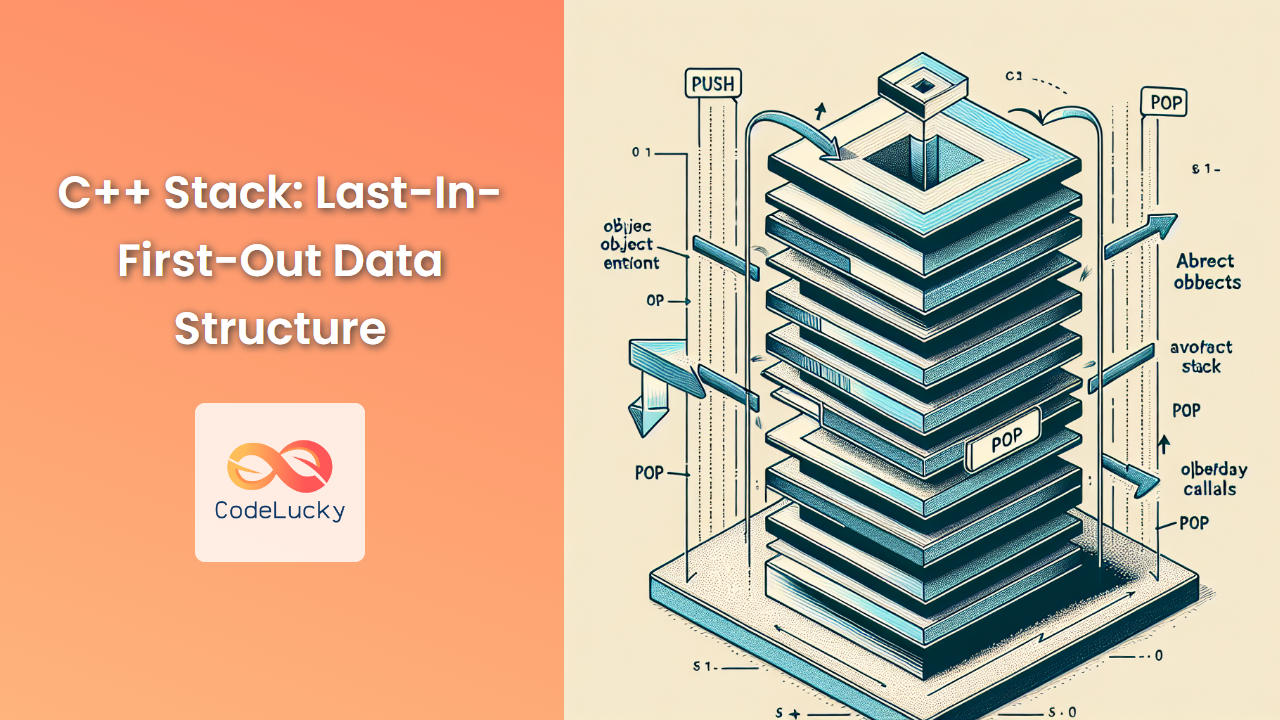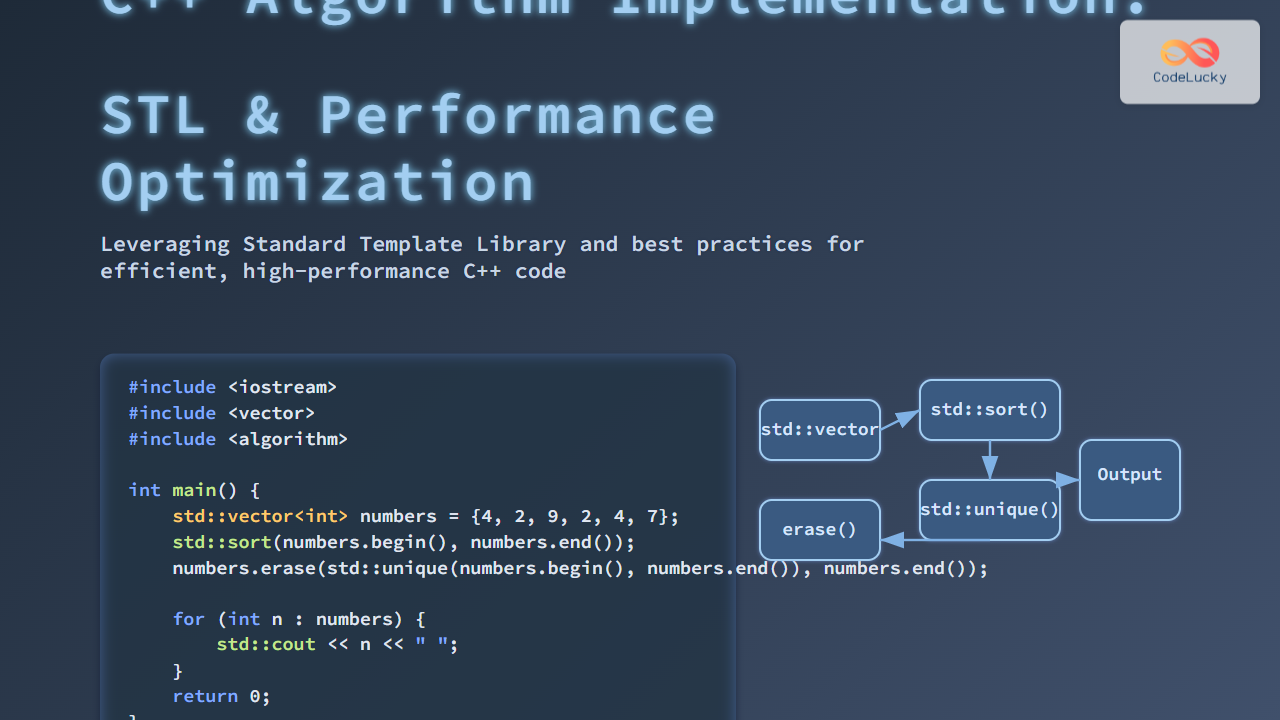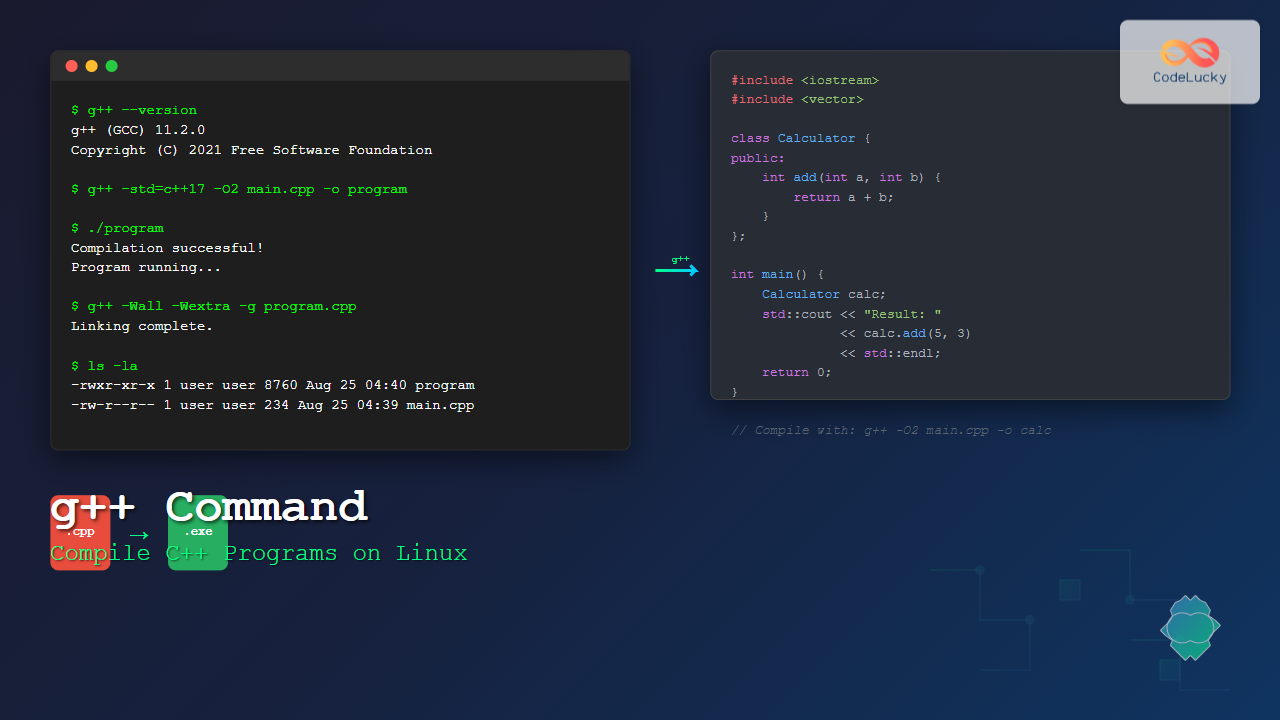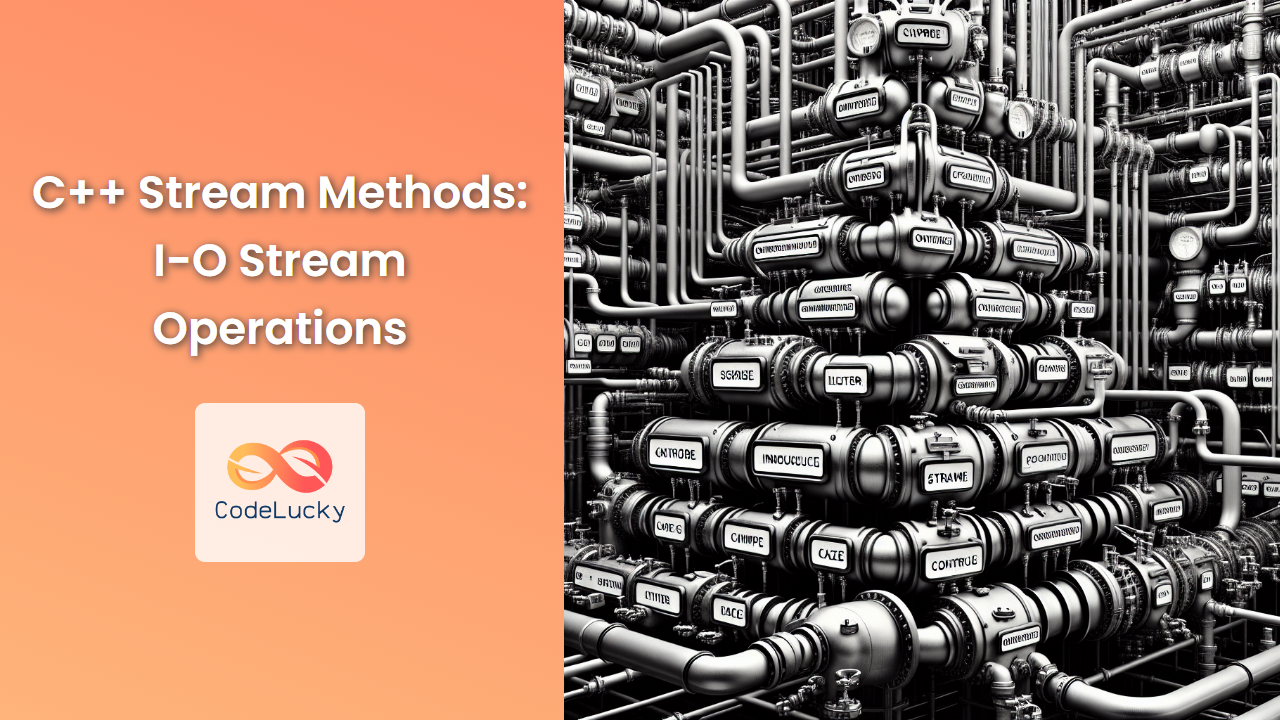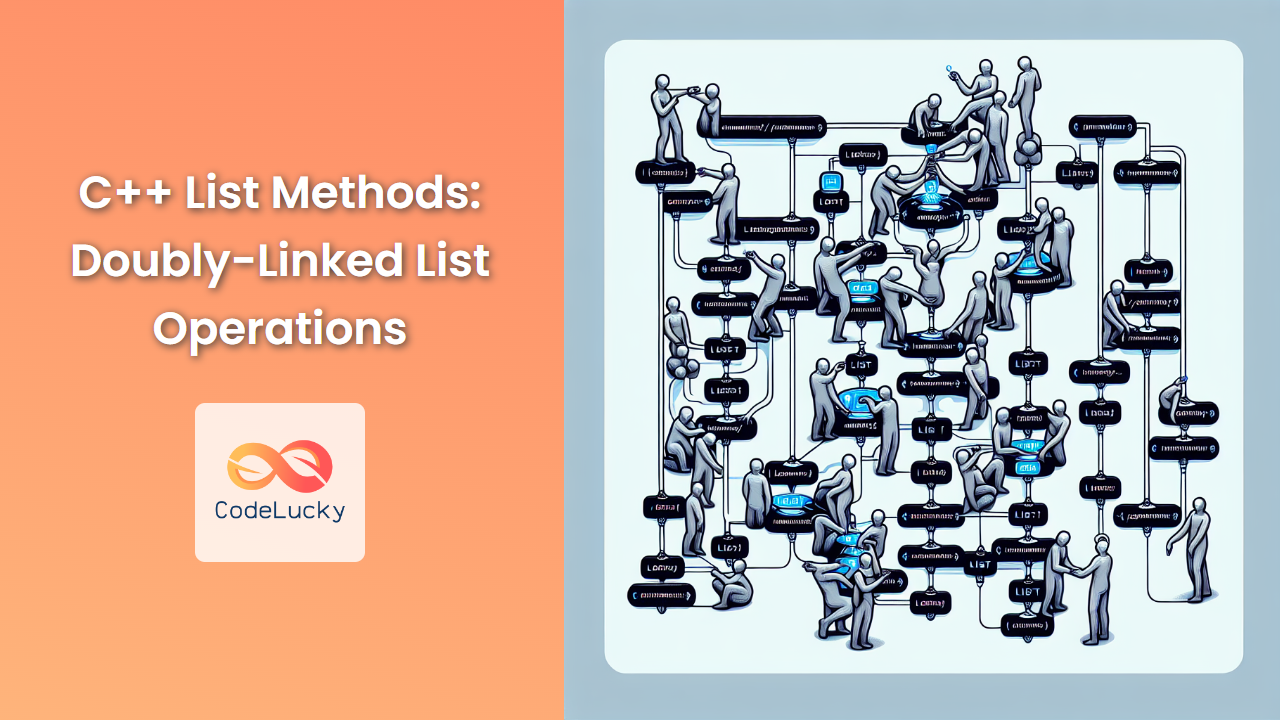In the world of C++ programming, the stack is a fundamental data structure that plays a crucial role in many algorithms and applications. As a last-in-first-out (LIFO) container, the stack offers a unique way to manage data, making it an essential tool in a C++ developer's toolkit. In this comprehensive guide, we'll dive deep into the C++ stack, exploring its characteristics, implementation, and practical applications.
Understanding the Stack Data Structure
🧱 The stack data structure follows the Last-In-First-Out (LIFO) principle. This means that the last element added to the stack will be the first one to be removed. Think of it like a stack of plates – you add plates to the top and remove them from the top as well.
Key characteristics of a stack include:
- Push operation: Adds an element to the top of the stack
- Pop operation: Removes the top element from the stack
- Top operation: Returns the top element without removing it
- Empty operation: Checks if the stack is empty
Let's visualize how a stack operates:
Push(5) | 5 | Pop() | |
Push(3) | 3 | ====> | 3 |
Push(7) | 7 | | 7 |
----- -----
Implementing a Stack in C++
C++ provides a built-in stack container as part of the Standard Template Library (STL). To use it, you need to include the <stack> header. Let's look at a basic implementation:
#include <iostream>
#include <stack>
int main() {
std::stack<int> myStack;
// Pushing elements
myStack.push(10);
myStack.push(20);
myStack.push(30);
// Accessing the top element
std::cout << "Top element: " << myStack.top() << std::endl;
// Popping elements
myStack.pop();
std::cout << "New top element after pop: " << myStack.top() << std::endl;
return 0;
}
Output:
Top element: 30
New top element after pop: 20
In this example, we create a stack of integers, push three elements onto it, access the top element, and then pop one element off the stack.
Stack Operations in Detail
Let's explore each stack operation in more detail:
1. Push Operation
The push() function adds an element to the top of the stack. Here's an example:
std::stack<std::string> bookStack;
bookStack.push("C++ Primer");
bookStack.push("Effective C++");
bookStack.push("Modern C++ Design");
std::cout << "Stack size after pushes: " << bookStack.size() << std::endl;
Output:
Stack size after pushes: 3
2. Pop Operation
The pop() function removes the top element from the stack. Note that it doesn't return the removed element:
bookStack.pop();
std::cout << "Stack size after pop: " << bookStack.size() << std::endl;
std::cout << "New top element: " << bookStack.top() << std::endl;
Output:
Stack size after pop: 2
New top element: Effective C++
3. Top Operation
The top() function returns a reference to the top element of the stack without removing it:
std::cout << "Top element: " << bookStack.top() << std::endl;
bookStack.top() = "More Effective C++";
std::cout << "Modified top element: " << bookStack.top() << std::endl;
Output:
Top element: Effective C++
Modified top element: More Effective C++
4. Empty Operation
The empty() function checks if the stack is empty:
std::stack<double> emptyStack;
std::cout << "Is bookStack empty? " << (bookStack.empty() ? "Yes" : "No") << std::endl;
std::cout << "Is emptyStack empty? " << (emptyStack.empty() ? "Yes" : "No") << std::endl;
Output:
Is bookStack empty? No
Is emptyStack empty? Yes
Advanced Stack Usage
Now that we've covered the basics, let's explore some more advanced concepts and use cases for stacks in C++.
Reversing a String Using a Stack
One common application of a stack is to reverse a string. Here's how you can do it:
#include <iostream>
#include <stack>
#include <string>
std::string reverseString(const std::string& input) {
std::stack<char> charStack;
// Push all characters onto the stack
for (char c : input) {
charStack.push(c);
}
std::string reversed;
// Pop characters off the stack to form the reversed string
while (!charStack.empty()) {
reversed += charStack.top();
charStack.pop();
}
return reversed;
}
int main() {
std::string original = "Hello, Stack!";
std::string reversed = reverseString(original);
std::cout << "Original: " << original << std::endl;
std::cout << "Reversed: " << reversed << std::endl;
return 0;
}
Output:
Original: Hello, Stack!
Reversed: !kcatS ,olleH
Checking for Balanced Parentheses
Stacks are excellent for checking if parentheses in an expression are balanced. Here's an implementation:
#include <iostream>
#include <stack>
#include <string>
bool areParenthesesBalanced(const std::string& expression) {
std::stack<char> parenthesesStack;
for (char c : expression) {
if (c == '(' || c == '[' || c == '{') {
parenthesesStack.push(c);
} else if (c == ')' || c == ']' || c == '}') {
if (parenthesesStack.empty()) {
return false;
}
char top = parenthesesStack.top();
parenthesesStack.pop();
if ((c == ')' && top != '(') ||
(c == ']' && top != '[') ||
(c == '}' && top != '{')) {
return false;
}
}
}
return parenthesesStack.empty();
}
int main() {
std::string expr1 = "{[()]}";
std::string expr2 = "([)]";
std::string expr3 = "((";
std::cout << expr1 << " is " << (areParenthesesBalanced(expr1) ? "balanced" : "not balanced") << std::endl;
std::cout << expr2 << " is " << (areParenthesesBalanced(expr2) ? "balanced" : "not balanced") << std::endl;
std::cout << expr3 << " is " << (areParenthesesBalanced(expr3) ? "balanced" : "not balanced") << std::endl;
return 0;
}
Output:
{[()]} is balanced
([)] is not balanced
(( is not balanced
Implementing a Stack Using a Linked List
While C++ provides a built-in stack container, it's instructive to implement a stack from scratch using a linked list. This approach gives you more control over the underlying data structure:
#include <iostream>
#include <stdexcept>
template <typename T>
class LinkedListStack {
private:
struct Node {
T data;
Node* next;
Node(const T& value) : data(value), next(nullptr) {}
};
Node* topNode;
size_t stackSize;
public:
LinkedListStack() : topNode(nullptr), stackSize(0) {}
~LinkedListStack() {
while (!empty()) {
pop();
}
}
void push(const T& value) {
Node* newNode = new Node(value);
newNode->next = topNode;
topNode = newNode;
++stackSize;
}
void pop() {
if (empty()) {
throw std::out_of_range("Stack is empty");
}
Node* temp = topNode;
topNode = topNode->next;
delete temp;
--stackSize;
}
T& top() {
if (empty()) {
throw std::out_of_range("Stack is empty");
}
return topNode->data;
}
bool empty() const {
return topNode == nullptr;
}
size_t size() const {
return stackSize;
}
};
int main() {
LinkedListStack<int> myStack;
myStack.push(10);
myStack.push(20);
myStack.push(30);
std::cout << "Stack size: " << myStack.size() << std::endl;
std::cout << "Top element: " << myStack.top() << std::endl;
myStack.pop();
std::cout << "After pop, new top: " << myStack.top() << std::endl;
while (!myStack.empty()) {
std::cout << "Popping: " << myStack.top() << std::endl;
myStack.pop();
}
std::cout << "Is stack empty? " << (myStack.empty() ? "Yes" : "No") << std::endl;
return 0;
}
Output:
Stack size: 3
Top element: 30
After pop, new top: 20
Popping: 20
Popping: 10
Is stack empty? Yes
This implementation provides the same functionality as the STL stack but allows for more flexibility in terms of memory management and potential customization.
Performance Considerations
🚀 When it comes to performance, the C++ stack container is highly efficient for its intended use cases:
- Push operation: O(1) time complexity
- Pop operation: O(1) time complexity
- Top operation: O(1) time complexity
- Empty operation: O(1) time complexity
These constant-time operations make the stack an excellent choice for scenarios where you need fast insertion and deletion at one end of the container.
Common Pitfalls and Best Practices
When working with stacks in C++, keep these points in mind:
-
🚫 Avoid accessing elements other than the top of the stack directly. The stack is designed for LIFO access.
-
✅ Always check if the stack is empty before calling
top()orpop()to avoid undefined behavior. -
🔄 If you need to iterate through all elements of a stack, consider using a temporary stack to hold the elements:
std::stack<int> originalStack;
std::stack<int> tempStack;
// Assume originalStack has some elements
while (!originalStack.empty()) {
int value = originalStack.top();
std::cout << value << " ";
tempStack.push(value);
originalStack.pop();
}
// Restore original stack
while (!tempStack.empty()) {
originalStack.push(tempStack.top());
tempStack.pop();
}
- 🧠 Remember that
pop()doesn't return the removed element. If you need the value, calltop()beforepop():
if (!myStack.empty()) {
int value = myStack.top();
myStack.pop();
// Use 'value' here
}
- 📊 If you need to find the minimum or maximum element in a stack efficiently, consider implementing a min-stack or max-stack data structure.
Real-world Applications of Stacks
Stacks find applications in various areas of computer science and software development:
- 🔙 Function call stack in programming language implementations
- 🔄 Undo mechanisms in text editors and other applications
- 🧮 Expression evaluation and syntax parsing
- 🗺️ Backtracking algorithms in maze-solving or game playing
- 🌐 Browser history (back button functionality)
Conclusion
The C++ stack is a powerful and efficient data structure that adheres to the Last-In-First-Out principle. Its simplicity and performance characteristics make it an indispensable tool in many programming scenarios. By mastering the stack and understanding its applications, you'll be better equipped to solve a wide range of programming challenges.
Whether you're implementing a simple string reversal algorithm or designing a complex expression evaluator, the stack data structure in C++ provides a solid foundation for your solutions. As you continue to explore C++ and its standard library, you'll find that the stack is just one of many powerful tools at your disposal for creating efficient and elegant code.
Remember to practice implementing and using stacks in various scenarios to solidify your understanding and improve your problem-solving skills. Happy coding!

